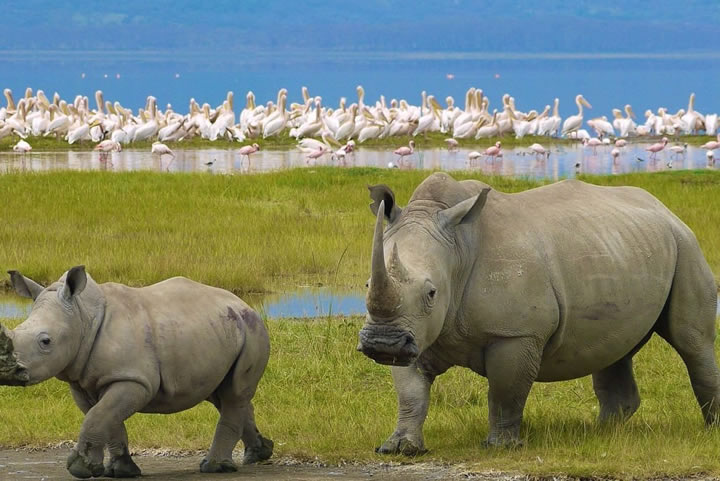Lake Nakuru National Park
Lake Nakuru National Park is one of Kenya’s most iconic national parks, covering an area of approximately 188 square kilometers (73 square miles). Located in the Rift Valley, about 160 kilometers (100 miles) northwest of Nairobi, this park is renowned for its breathtaking landscapes, vibrant wildlife, and unique ecological features. Established in 1961.

Lake Nakuru National Park originally served as a bird sanctuary to protect the lesser flamingos that flock to its shores. Over the years, the park has expanded to encompass diverse habitats, including woodlands, grasslands, rocky escarpments, and, of course, the spectacular Lake Nakuru, a shallow alkaline lake that experiences fluctuating water levels, influencing the wildlife present in the area.
Scenery of Lake Nakuru National Park
The scenery at Lake Nakuru National Park is truly breathtaking. The park features stunning landscapes, with the shimmering waters of Lake Nakuru surrounded by acacia woodlands, grasslands, and the dramatic Nakuru Escarpment, which provides panoramic views of the park and lake. The vibrant colors of the lake, especially when covered with flocks of flamingos, create a mesmerizing sight.
Why is Lake Nakuru National Park Famous?
Lake Nakuru is particularly famous for its massive populations of lesser flamingos and greater flamingos, which gather in the lake to feed on the algae that thrive in its alkaline waters. This phenomenon offers visitors an incredible opportunity to witness one of nature’s most stunning spectacles. Additionally, the park is known for its diverse habitats, which support a rich variety of wildlife, making it a popular destination for photographers, nature lovers, and families looking for adventure.
